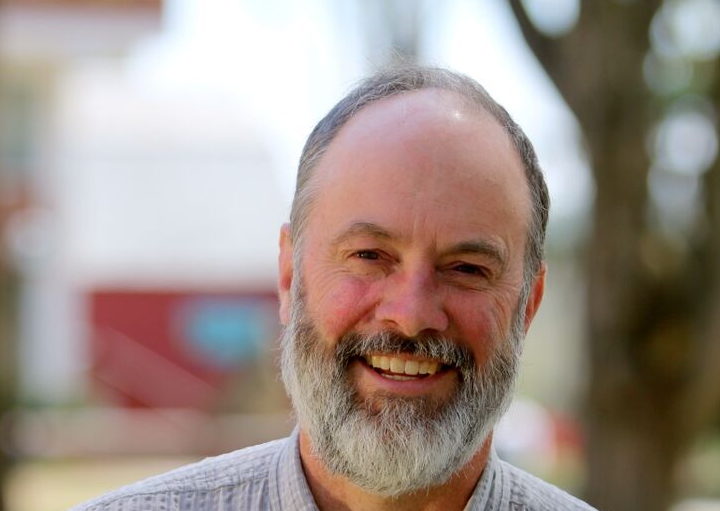Our society has become increasingly divorced from agriculture, and our assumptions about food and farming are too often based more on emotion or business interests than those of real, on-farm experiences and community decision-making about the food we raise and eat.
The scenario unfolding at Green Mountain College in Vermont is a perfect example of how the narrow, self interests of a few are being used to trump the difficult decisions made by a community connected to, and engaged with, its food and farm system.
By now, you may well have heard the story of Bill and Lou, the team of oxen at Green Mountain College who, after much open discussion within our campus community, will soon be sent to slaughter.
What may not be so evident in the debate now swirling around the periphery of our small Vermont campus is that this decision is another step in our college’s longstanding effort to foster a community-based food system.
However, given the pressures exerted from outside interest groups that know neither the facts nor the animals nearly as well as our students do, it is beginning, to feel more like an issue of food sovereignty.
Green Mountain College is a thoughtful and diverse community charting its own course in an industrialized food system that typically relegates choosing to a grocery store grab-bag experience.
Bill and Lou came to the college a decade ago as our first team of oxen. They were male calves on a local dairy, facing the same fate that most male calves on dairies face these days—an early death. Farm managers and students trained Bill and Lou and have used them for a variety of farm tasks. As Bill and Lou have gotten older, we have been preparing for a transition to a new team, a decision expedited this past summer when Lou injured his leg after stepping in a woodchuck hole. However, we decided not to finalize the necessary decision during the summer, when most of our student body was absent. Rather, we waited until the students returned to help us reflect upon the fate of our livestock, as has been our tradition for more than a decade when we first began rebuilding our college farm and food system.
In 2000, my Sustainable Farming Systems class proposed rebuilding the farm that the college had abandoned fifty years prior. To my surprise, the vegetarians in the class insisted that livestock be incorporated into the farm. They wanted a working farm, not a petting zoo or an animal sanctuary.
These vegetarians wisely observed that the college had a responsibility to provide students with the opportunity to take ownership of their decisions to eat meat and to come face to face with those realities. Furthermore, they believed that contrasting livestock farming practices and the “mystery meat” streaming through the dining hall freight doors might help expose the ills and injustices of industrialized livestock farming.
Since that time, faculty, students, and administrators from all disciplines and dietary perspectives have gathered to make decisions about the fate of livestock on the college farm: cattle, swine, poultry, and sheep. Sometimes, the dialogue has been heated, but on most occasions, the discussions have been tempered and frank, with give and take from all sides.
Such discourse is in sharp contrast with the voluminous, and misplaced, reaction that we have received from outside our community regarding the fate of Bill and Lou. Clearly, this Internet buzz being generated by outsiders is designed to be loud enough to drown out our own community’s difficult decision. That leads to the greatest contradiction: Bill and Lou have names, faces, and a connection to our community, and others are now telling us how to make decisions for our community and foodshed. Isn’t this the kind of food system we’re trying to avoid — allowing for those with the biggest voice, the most money, or partial facts to make decisions for entire communities to which they have no connection?
For anyone who cares about farm animals, caution is warranted in precluding the slaughter and consumption of livestock due to the depth and longevity of the human-animal relationship. If the extensiveness of that relationship is the rationale for not slaughtering an animal, then the logical conclusion is that relationships with any animals used for food should not be fostered. Run with that argument far enough, and you end up smack-dab in the middle of a “concentrated animal feeding operation,” otherwise known as a CAFO.
As a grass-based livestock farmer myself, with fifty head of rare breed cattle, I covet a deep relationship with my animals, and I think that the abolition of livestock farming is unlikely to happen. However, the transformation of livestock farming has to happen, and it will not happen through polarizing polemic. It might happen when communities take ownership of their food systems and responsibility for their own decisions. What better place for it to occur now than at a community-minded liberal arts college, where the pragmatism of the farmer meets the kaleidoscopic prisms of the liberal arts?
If we have any hope of transitioning away from industrialized factory farming and reinvigorating democracy in our food system, it depends more upon rich community dialogue than single-minded activism.






